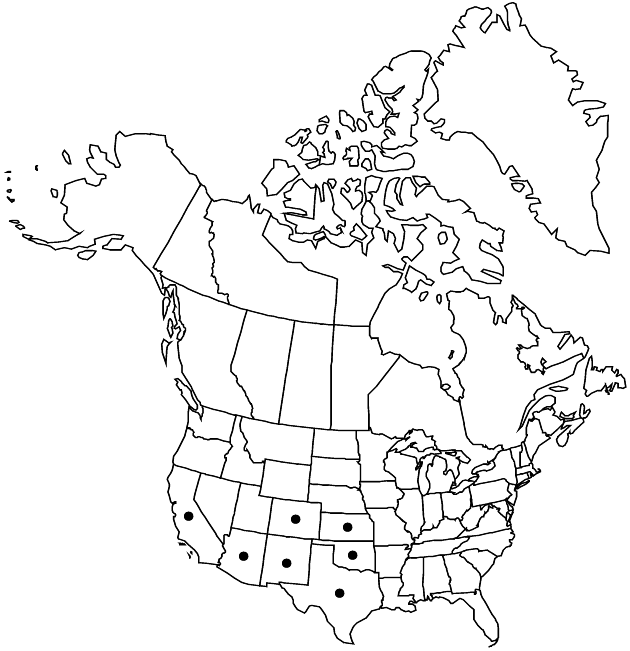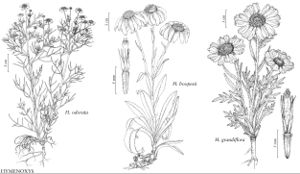Difference between revisions of "Hymenoxys odorata"
in A. P. de Candolle and A. L. P. P. de Candolle, Prodr. 5: 661. 1836.
FNA>Volume Importer |
FNA>Volume Importer |
(No difference)
| |
Revision as of 18:45, 24 September 2019
Annuals, 10–80 cm (robust). Stems 1–25, usually purple-red-tinted proximally, sometimes throughout, often branched throughout, ± hairy. Leaves: blades simple or lobed (lobes 3–19+), ± hairy, gland-dotted; mid leaves lobed (lobes 5–11+, terminal lobes 0.3–1 mm wide). Heads 15–350+ per plant in paniculiform arrays. Peduncles 2–12 cm, sparsely hairy. Involucres subhemispheric to campanulate to ± urceolate, 6–10 × 7–12.5 mm. Phyllaries in 2 series, unequal; outer 8–13, basally connate 1/4–1/3 their lengths, obovate to oblanceolate, 3.5–5.2 mm, apices acuminate; inner 8–13, obovate, 3.8–5.9 mm, apices acuminate to acute. Ray florets 8–13; corollas yellow, 8.5–11 × 3–5.5 mm. Disc florets 50–150+; corollas 2.6–4.1 mm. Cypselae narrowly obpyramidal, 1.7–2.5 mm; pappi of 5–6 obovate, aristate scales 1.6–2.3 mm. 2n = 22, 24, 28, 30.
Phenology: Flowering (Feb–)Apr–Jun(–Aug).
Habitat: Roadsides, open flats, mesquite and creosote-bush flats, ditches and drainage areas, stream banks and bottoms
Elevation: 60–1500 m
Distribution

Ariz., Calif., Colo., Kans., N.Mex., Okla., Tex., Mexico (Chihuahua, Coahuila, Durango, Nuevo León, San Luis Potosí, Sonora, Tamaulipas).
Discussion
Selected References
None.
